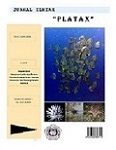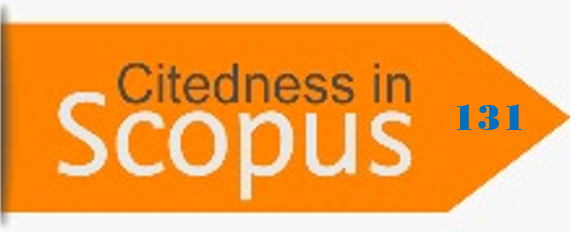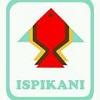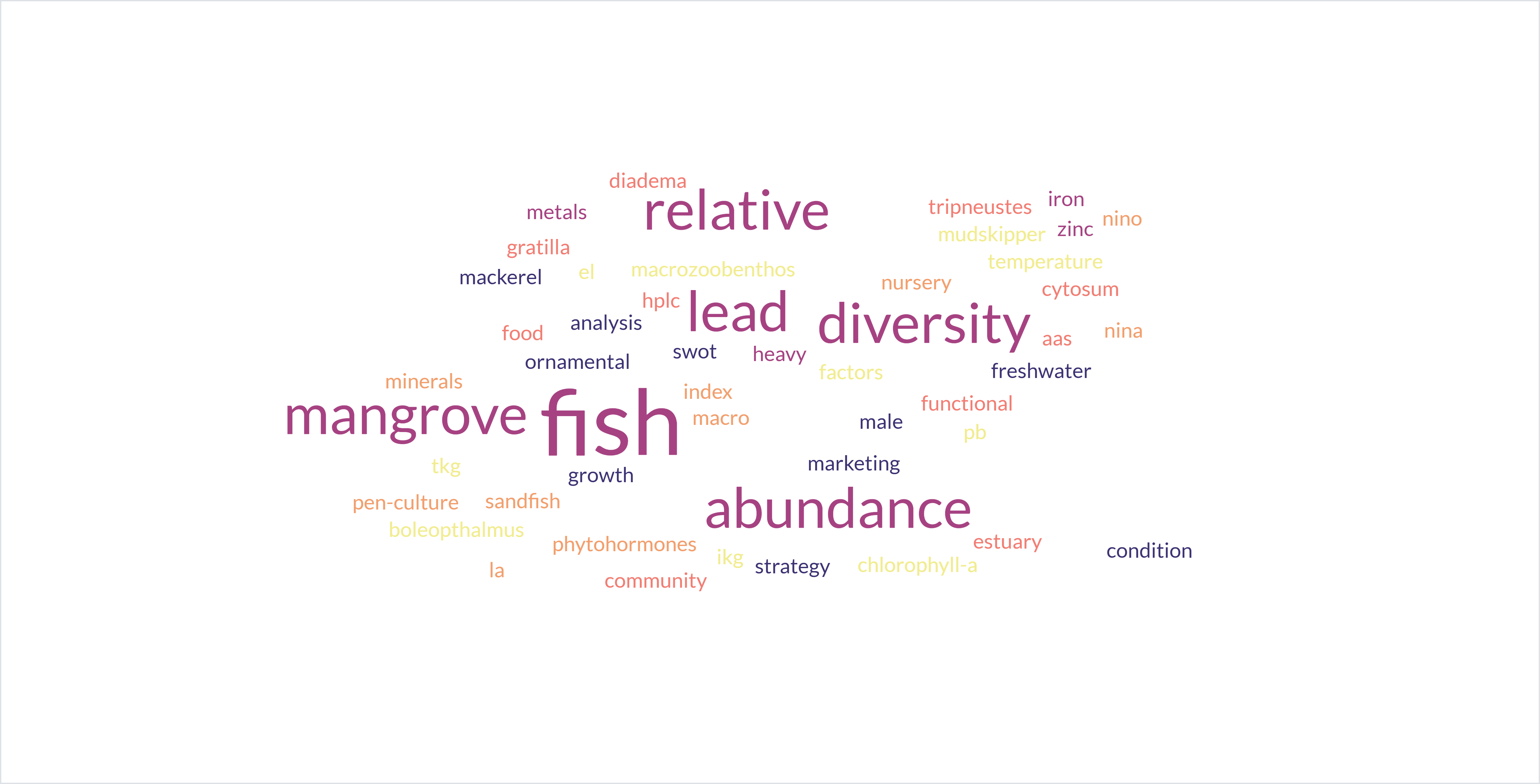Analysis Of Bacteria Community In The Plastic Waste
DOI:
https://doi.org/10.35800/jip.8.2.2020.29877Abstract
Plastic waste is a general problem for the environment. Therefore, more ways of plastic waste management are required. One of the plastic waste management process is microbiological biodegradation using bacteria. This research aims to identify the bacterial community in Polyethylene Terephthalate type plastic waste by molecular analysis. In order to identify the community of bacteria, it is necessary to isolate the DNA of uncultured bacteria. In this research, the isolation of the DNA of uncultured bacteria from plastic waste was carried out by the Qiagen DNeasy® PowerSoil Pro Kit handbook. The DNA genome was subsequently examined using electrophoresis gel and UV-Vis spectrophotometer. The DNA genome was then amplified using Polymerase Chain Reaction and the bacteria were identified using Next Generation Sequencing (NGS) analysis. On the results of this study, the uncultured bacteria DNA from plastic waste was isolated with purification value of 1. The amplified DNA genome was detected by DNA bands through gel electrophoresis gel at ~1500 bp. The bacteria in the plastic waste were Proteobacteria, Cyanobacteria, Actinobacteria, Chlorobi, Bacteroidetes, Firmicutes, Chloroflexi, Thaumarchaeuta and Gemmattimonadetes with the highest relative abundance of Proteobacteria.
Keywords : Bacteria, Deoxyribo Nucleic Acid ( DNA), Plastic Waste, Uncultured
Abstrak
Sampah plastik merupakan masalah bagi lingkungan oleh sebab itu diperlukan pengelolaan yang baik. Salah satu pengelolaan sampah plastik yakni dengan cara biodegradasi secara mikrobiologi menggunakan bakteri. Penelitian ini bertujuan untuk mengetahui komunitas bakteri pada sampah plastik, khususnya jenis Polyethylene Terephthalate secara molekuler. Untuk analisis bakteri secara molekuker, diperlukan tahapan isolasi DNA bakteri. Pada penelitian ini isolasi DNA bakteri tanpa kultivasi dari sampah plastik dilakukan dengan mengikuti prosedur ekstraksi DNeasy® PowerSoil Pro Kit, Qiagen dengan menggunakan proses pengikisan pada kedua permukaan plastik sebagai tahapan preparasi sampel. Hasil ekstraksi DNA selanjutnya diuji menggunakan elektroforesis gel dan spektofotometer UV-Vis. Genom DNA kemudian diamplifikasi menggunakan Polymerase Chain Reaction dan bakteri diidentifikasi dengan Next Generation Sequencing analysis. Hasil penelitian menujukkan bahwa, DNA bakteri tanpa kultivasi dari sampah plastik berhasil diisolasi dan diamplifikasi yang ditunjukkan dengan terbentuknya pita DNA lewat hasil elektroforesis gel pada panjang 1500 bp. Bakteri yang terdapat pada plastik jenis PET adalah Proteobacteria, Cyanobacteria, Actinobacteria, Chlorobi, Bacteroidetes, Firmicutes, Chloroflexi, Thaumarchaeuta dan Gemmattimonadetes dengan kelimpahan relatif tertinggi adalah Proteobacteria
Kata kunci: Bakteri, Deoxyribo Nucleic Acid ( DNA), Sampah Plastik, Tanpa Kultivasi
References
Amaral-Zettler, L. A., Zettler, E. R., Slikas, B., Boyd, G. D., Melvin, D. W., Morrall, C. E., Proskurowski, G., Mincer, T.J. 2015. The biogeography of the Plastisphere: implications for policy. Front. Ecol. Environ. 13 (10), 541–546.
Austin, H. P., Allen, M. D., Donohoe, B. S., Rorrer, N. A., Kearns, F. L., Silveira, R. L., Pollard, B. C., Dominick, G., Duman R., El Omari K., Mykhaylyk, V., Wagner, A., Michener, W. E., Amore, A., Skaf M. S., Crowley M. F., Thorne, A. W., Johnson, C. W., Woodcock, H. L., McGeehan, J. E., Beckham, G. T. Characterization and engineering of a plastic-degrading aromatic polyesterase. Proc Natl Acad Sci U S A. 2018;115: E4350–E4357. doi: 10.1073/pnas.1718804115.
Black, J. G. 2002. Microbiology. John Wiley & Sons, Inc.
Dang, H., Lovell, C. R., 2000. Bacterial primary colonization and early succession on surfaces in marine waters as determined by amplified rRNA gene restriction analysis and sequence analysis of 16S rRNA genes. Appl. Environ. Microbiol. 66 (2), 467–475.
Dian, G. M., dan Pandebesie, E. S. 2013. Pengaruh Penambahan Mikroorganisme Terhadap Kondisi Operasi Pemusnahan Sampah Plastik Biodegradable. Jurnal Teknik POMITS Vol. 2, No. 1, ISSN: 2337-3539 (2301-9271 Print).
Haryogya, A. M., and Ustadi. 2020. Isolation and Moleculer Identification of Chitinolytic Bacterium from Ronto. Departement of Fhisheries, Faculty of Acriculture, Universitas Gadjah Mada.
Hetherington J., Leous J., Anziano J., Brockett D., Cherson A., Dean E., Dillon J., Johnson T., Littman M., Lukehart N., Ombac J. and Reilly K., 2005. The Marine Debris Research, Prevention and Reduction Act: A Policy Analysis. Columbia University New York, New York.
Holt, J. G., Krieg, N. R., Sneath, P. H. A., Staley, J. T., & Williams, S. T. (2000). Bergey’s manual of determinative bacteriology ninth edition. Maryland: Lippicott Williams & Wilkins, a wolters Kluwer company.
Irmawati., 2013. Perubahan keragaman genetik ikan kerapu tikus (cromileptes altivelis) generasi pertama pada stok hatchery. IPB. Bogor. https://repository. ipb.ac.id /handle/123456789/6996.
Kaseem, M. K., Hamad, and Deri, F. 2012. Thermoplastic starch blends: A review of recent works. 54:165-176.
Lebreton, L., van der Zwet, J., Damsteeg, J., Slat, B., Andrady, A., and Reisser, J. 2017. River plastic emissions to the World's Oceans. Nat. Commun. 8:15611. doi: 10.1038/ncomms15611.
Mahalik, N. P., and A. N. Nambiar. 2010. Trends in Food Packaging and Manufacturing Systems and Technology. Trends in Food Science & Technology. 21: 117ï€128.
Mardiana, A. N., Murniasih, T., Rukmi, D. W., Kusnadi, J. 2020. Potensi Bakteri Sebagai Sumber Ntibiotik Baru Penghambat Saccharomyces aurens. Jurnal Teknologi Pertanian. 21(1).
Marliani, N. 2014. Pemanfaatan limbah rumah tangga (sampah anorganik) sebagai bentuk implementasi dari pendidikan lingkungan hidup. Jurnal Formatif 4(2): 124-132, ISSN: 2088-351X
Napitupulu, H. G., Rumengan, I. F., Wullur, S., Ginting, E. L., Rimper, J. R. T. S. L., dan Toloh, B. H. 2019. Bacillus sp. sebagai Agensia Pengurai dalam Pemeliharaan Brachionus rotundiformis yang Menggunakan Ikan Mentah sebagai Sumber Nutrisi. Jurnal Ilmiah Platax. 7(1) :158-169.
Oberbeckmann, S., Loeder, M. G., Gerdts, G., Osborn, A. M., 2014. Spatial and seasonal variation in diversity and structure of microbial biofilms on marine plastics in Northern European waters. FEMS Microbiol. Ecol. 90 (2), 478–492.
Oberbeckmann, S., Osborn, A. M., Duhaime, M. B. 2016. Microbes on a bottle: substrate, season and geography influence community composition of microbes colonizing marine plastic debris. PLoS One 11 (8), e0159289.
Pangestu, S. N., Budiharjo, A., Rukmi. 2016. Isolasi, Identifikasi 16S rRNA dan Karakterisasi Morfologi Bakteri Pendegradasi Plastik Polietilen (PE). Jurnal Biologi. 5(1) : 24-29.
Sambrook J., Fritsch E. F., and Maniatis T. 1989. Molecular cloning: A laboratory manual. USA: Cold Spring Harbor Lab ress.
Sriningsih, A dan Shovitri, M. 2015. Potensi Isolat Bakteri Pseudomonas sebagai Pendegradasi Plastik, Jurnal Sains dan Seni ITS, 4, E-67 – E-69.
Treviño, A. L, Gerardo G. S, Raúl R. H and Cristóbal N. A. 2012. Microbial Enzymes Involved in Polyurethan Biodegradation: A Review, J Polym Environ, 20, 261.
Tokiwa, Y., B. P. C alab ia, C. U. Ugwu, and S. Aiba. 2009. Biodegradability of Plastics. Int. J. Mol. Sci. 10: 3722-3742.
Downloads
Published
How to Cite
Issue
Section
License
COPYRIGHT
Authors who publish with this journal agree to the following terms:
Authors hold their copyright and grant this journal the privilege of first publication, with the work simultaneously licensed under a Creative Commons Attribution License that permits others to impart the work with an acknowledgment of the work's origin and initial publication by this journal.
Authors can enter into separate or additional contractual arrangements for the non-exclusive distribution of the journal's published version of the work (for example, post it to an institutional repository or publish it in a book), with an acknowledgment of its underlying publication in this journal.
Authors are permitted and encouraged to post their work online (for example, in institutional repositories or on their website) as it can lead to productive exchanges, as well as earlier and greater citation of the published work (See The Effect of Open Access).




















